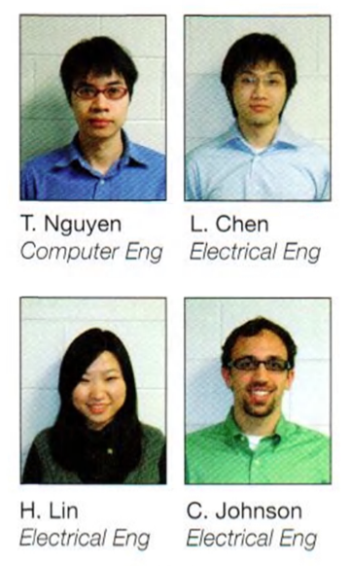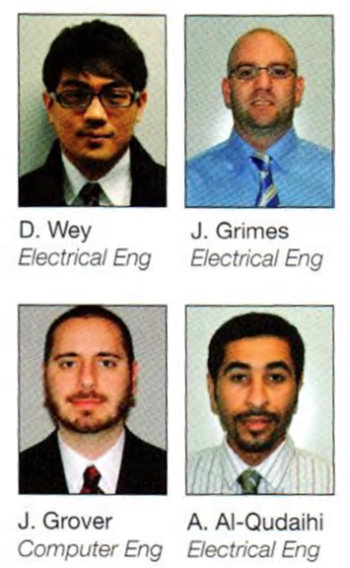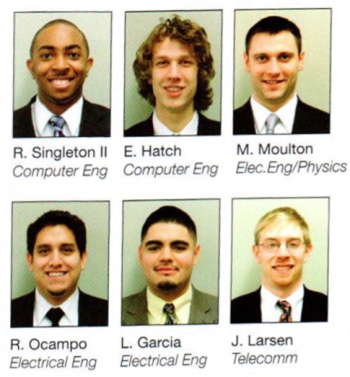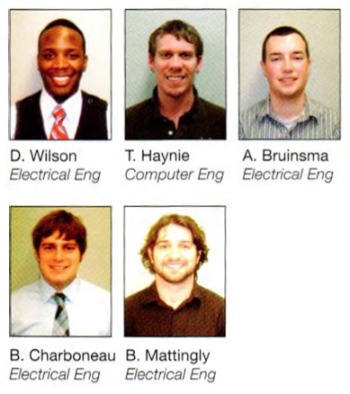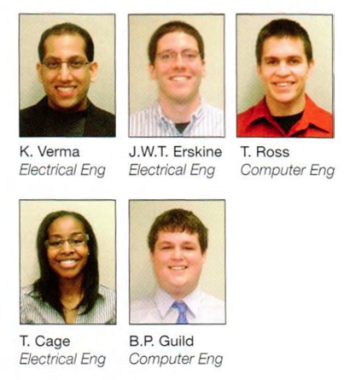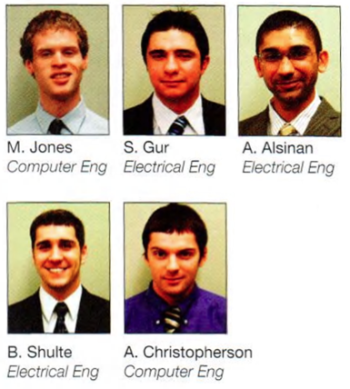Electrical Engineering
Projects
Electrical and Computer Engineering ECE 480 Senior Design is required of all electrical and computer engineering majors at MSU.
For information on becoming a project sponsor, please contact Gregg Motter.
The following are the project sponsors and projects for the spring of 2010:
MSU Resource Center for Persons with Disabilities: Synchronized Audio Indexed Notetaker
 The purpose of the Synchronized Audio indexed Note Taker (SAiNT) is to assist persons with disabilities with class work and note taking during lecture. Specifically, accessibility to blind students will be considered due to the fact they have difficulty taking notes during lecture. SAiNT will help the user record entire lectures as well as type time-synchronized notes into the device concurrently. The lecture and text can be downloaded to a computer, allowing the user to search the text for keywords later and begin playback o f the lecture at the point in the lecture when the notes were taken. In other words, the device will record audio, annotate it with synchronized text from the keyboard and allow for file transfer to a PC for search and playback.
The purpose of the Synchronized Audio indexed Note Taker (SAiNT) is to assist persons with disabilities with class work and note taking during lecture. Specifically, accessibility to blind students will be considered due to the fact they have difficulty taking notes during lecture. SAiNT will help the user record entire lectures as well as type time-synchronized notes into the device concurrently. The lecture and text can be downloaded to a computer, allowing the user to search the text for keywords later and begin playback o f the lecture at the point in the lecture when the notes were taken. In other words, the device will record audio, annotate it with synchronized text from the keyboard and allow for file transfer to a PC for search and playback.
MSU Resource Center for Persons with Disabilities: AHEAD: Accessible Home Energy Audio Dashboard
 Power companies and consumers alike have been clamoring for a new ‘smart-grid’, an intelligent power network that streamlines energy distribution and reduces the stress on the current power grid. This initiative is aimed at reducing carbon emissions and reducing costs for both energy consumer and provider.
Power companies and consumers alike have been clamoring for a new ‘smart-grid’, an intelligent power network that streamlines energy distribution and reduces the stress on the current power grid. This initiative is aimed at reducing carbon emissions and reducing costs for both energy consumer and provider.
Our team has been tasked by MSU’s Resource Center for Persons w’ith Disabilities (RCPD) to design a smart-grid enabled energy management system that is universally accessible and addresses the needs o f people with disabilities. Since there is no established industry standard for accessible design in energy management systems, our team is at the forefront in creating one such standard.
The key feature of our energy management system is the integration of a Home Area Network (HAN). In addition to displaying up-to-date information about electricity rates and energy consumption. AHEAD provides the user a centralized interface that allows them to turn household appliances on and off. Pre-configured operation modes are provided so the user can tailor AHEAD to their own energy-saving needs. For those with visual impairment, AHEAD has a text-to-speech option allowing them to interact with control features via multi-touch gestures. A built-in flashing LED notifies people with hearing disabilities of important alerts and power consumption status. AHEAD is also compatible with external devices for motorically impaired persons. In effect, AHEAD not only enables people with disabilities to participate in green initiatives and save money, it also provides them a robust automated HAN control device to facilitate a more independent lifestyle.
George & Vickie Rock and Dow Chemical: Connect-on-Demand Satellite Link for Tanzanian Schools
 Our project—one of a series— involves establishing a more power-efficient internet connection tor rural Tanzanian schools, in particular. Baraka Primary School. Manyara Secondary School, and Rift Valley Secondary School. Earlier teams have designed modules for accessing the internet, and our objective is to improve this system, under generous support from George & Vickie Rock and a matching grant from Dow.
Our project—one of a series— involves establishing a more power-efficient internet connection tor rural Tanzanian schools, in particular. Baraka Primary School. Manyara Secondary School, and Rift Valley Secondary School. Earlier teams have designed modules for accessing the internet, and our objective is to improve this system, under generous support from George & Vickie Rock and a matching grant from Dow.
The team has been challenged to design a solar-powered, connect-on-demand” satellite/radio link. With this new design in place, the system will draw minimum power from the batteries while optimizing the time of its usage. This will allow the Tanzanian users to gain the most out of their internet while staying well within their power limitations. In essence, the students at any of the three schools will be able to connect to the internet at any time, causing it to power up when accessed. Currently, the initial set up of this system is implemented such that only Baraka has control over the satellite antenna, which sometimes limits the availability of the internet for users at Manyara Secondary School. We will eliminate that limitation and extend similar capabilities to Rift Valley Secondary School.
Our design team includes five electrical engineering students and one telecommunications student. Through our diverse backgrounds and various experiences, we will test various technologies to accomplish our design. Following the semester, the design team will travel to Tanzania in order to install the final system.
George & Vickie Rock and Dow Chemical: Computer System with Audio Integration
 Two schools near Mto wa Mbu. Tanzania currently have multi-seat computer systems, developed by earlier ECE 480 teams, that require upgrades. A third school is also scheduled to be added to this project. Michigan State University, with support from George and Vickie Rock and a matching grant from the Dow Chemical Company, will continue to support this project during another team visit in May 2010. The two currently operational systems have 6 seats running off of a single computer, to save both hardware and power costs. However, these systems do not automatically associate the keyboards and mice with the proper monitors. They instead require a manual input, which can be executed incorrectly by students with limited computer experience. The system also periodically crashes when not all of the sessions are in use. It is the responsibility of Design Team 4 to implement a system to automatically associate a keyboard, mouse and monitor to each user station. In addition, Team 4 will implement audio capabilities for each station to further the educational opportunities for the students. Team 4 will also bring the third school online when they travel to Tanzania in May, 2010.
Two schools near Mto wa Mbu. Tanzania currently have multi-seat computer systems, developed by earlier ECE 480 teams, that require upgrades. A third school is also scheduled to be added to this project. Michigan State University, with support from George and Vickie Rock and a matching grant from the Dow Chemical Company, will continue to support this project during another team visit in May 2010. The two currently operational systems have 6 seats running off of a single computer, to save both hardware and power costs. However, these systems do not automatically associate the keyboards and mice with the proper monitors. They instead require a manual input, which can be executed incorrectly by students with limited computer experience. The system also periodically crashes when not all of the sessions are in use. It is the responsibility of Design Team 4 to implement a system to automatically associate a keyboard, mouse and monitor to each user station. In addition, Team 4 will implement audio capabilities for each station to further the educational opportunities for the students. Team 4 will also bring the third school online when they travel to Tanzania in May, 2010.
Air Force Research Laboratory: Small, Lightweight Speed/Distance Sensors for Skiers/Snowboarders
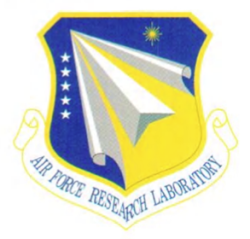 Performance analysis devices are ubiquitous tools in modern athletics. Such devices have seen little exposure in snow sports, particularly skiing and snowboarding. The objective of our project is to design and prototype a speedometer for skiers, using Doppler speed detection. This is the third iteration o f the device at MSU, sponsored by the Air Force Research Laboratory.
Performance analysis devices are ubiquitous tools in modern athletics. Such devices have seen little exposure in snow sports, particularly skiing and snowboarding. The objective of our project is to design and prototype a speedometer for skiers, using Doppler speed detection. This is the third iteration o f the device at MSU, sponsored by the Air Force Research Laboratory.
Our goal was to develop a device that has the same utility as a pedometer, but with safety and energy saving features for our unique application. The device must measure the instantaneous velocity o f a user and record velocities for a given run. At the end of a session the user must be able to access maximum and average velocity data for each one minute interval of the run as well as the total distance travelled. Temperature and power considerations for this project are crucial; the device should operate at a minimum of -10°F with 2 hours o f battery life (while recording). The speedometer must also be capable of data transfer to an external device for performance analysis.
For the fastest turnaround time of a prototype the design team chose to purchase a prefabricated Doppler module and design interface circuitry to convert the frequency shift from the module output into a DC voltage level to be read by the microcontroller. The user interface was designed for ease of use and comprehensible data interpretation. Our design must save power by turning off components at key times during operation, allowing for longer battery life.
Hyundai Kia America Technical Center (HATCI): Capacitive Rain Sensor for Automatic Wiper Control
![]() The incorporation of advanced technological features into automobiles has created an alarming number of distractions for drivers. One feature designed to ease the burden on vehicle operators is an automatic rain-sensing wiper system, which can turn on the car’s wipers when rain is detected on the windshield. Current systems use an optical sensor, which has a small detection area and is prone to error. Our design team, sponsored by HATCI, is working to develop a more accurate and cost-effective sensor using capacitive-sensing technology. Our sensor will establish an electric field which will extend through the windshield and out of the glass a short distance. Objects with certain dielectric or conductive properties, such as rain, interfere with this electric field, changing the capacitance o f the sensor. The capacitance o f the sensor can be monitored using advanced circuitry and relayed to a microcontroller for processing. By characterizing the response to rain, we can program the microcontroller to turn the wipers on when a corresponding change in capacitance occurs.
The incorporation of advanced technological features into automobiles has created an alarming number of distractions for drivers. One feature designed to ease the burden on vehicle operators is an automatic rain-sensing wiper system, which can turn on the car’s wipers when rain is detected on the windshield. Current systems use an optical sensor, which has a small detection area and is prone to error. Our design team, sponsored by HATCI, is working to develop a more accurate and cost-effective sensor using capacitive-sensing technology. Our sensor will establish an electric field which will extend through the windshield and out of the glass a short distance. Objects with certain dielectric or conductive properties, such as rain, interfere with this electric field, changing the capacitance o f the sensor. The capacitance o f the sensor can be monitored using advanced circuitry and relayed to a microcontroller for processing. By characterizing the response to rain, we can program the microcontroller to turn the wipers on when a corresponding change in capacitance occurs.
Texas Instruments: Ethernet Integrity Analyzer
 Ethernet has become one of the most popular and widely deployed network technologies in the world. In today’s increasingly complex internet and client-server environments, the need for Ethernet Analyzers is becoming more essential for network operation and maintenance. ECE 480 Design Team 7will design and develop a handheld analyzer for Ethernet networks. Our Ethernet Integrity Analyzer (ElA) will automatically execute a diagnostic suite, and perform integrity checks when plugged into a standard RJ-45 Ethernet port. These tests include: Time Domain Reflectometry (TDR), Active Link Cable Diagnostic (ALCD), and Digital Spectrum Analyzer (DSA). These diagnostics will detect and locate faults such as, cable damage, water ingress, and manufacturing flaws. The ElA will display the results of the tests by its onboard color touch-screen display and can optionally tag and store the results in a data log to be later uploaded to a host PC for off-line analysis. The E1A is pow’ered from one of three sources: Power-over-Ethemet if detected on the link, a DC input supply or. if neither o f the line sources arc detected, batteries. This project will utilize a number of existing TI technologies and IC chips.
Ethernet has become one of the most popular and widely deployed network technologies in the world. In today’s increasingly complex internet and client-server environments, the need for Ethernet Analyzers is becoming more essential for network operation and maintenance. ECE 480 Design Team 7will design and develop a handheld analyzer for Ethernet networks. Our Ethernet Integrity Analyzer (ElA) will automatically execute a diagnostic suite, and perform integrity checks when plugged into a standard RJ-45 Ethernet port. These tests include: Time Domain Reflectometry (TDR), Active Link Cable Diagnostic (ALCD), and Digital Spectrum Analyzer (DSA). These diagnostics will detect and locate faults such as, cable damage, water ingress, and manufacturing flaws. The ElA will display the results of the tests by its onboard color touch-screen display and can optionally tag and store the results in a data log to be later uploaded to a host PC for off-line analysis. The E1A is pow’ered from one of three sources: Power-over-Ethemet if detected on the link, a DC input supply or. if neither o f the line sources arc detected, batteries. This project will utilize a number of existing TI technologies and IC chips.
Triple Crown Services: Roadrailer Air Brake Fault Locator
 Team 8, sponsored by Triple Crown Services, is designing a system in which pressure transmitters are to be integrated into the air brake system of the Roadrailer trailer cars at regular intervals along the train. The Triple Crown RoadRailer is a Bimodal Transportation system. RoadRailer Trailers arrive at the rail terminal like any other semi-truck. A trailer is backed up onto the railway tracks and disconnected from the highway tractor. Once in place, the trailer bed is coupled to a rail bogie and the road tires lifted clear. Then the process is repeated for each trailer. Once the train is assembled, the brake lines are connected, then the air brakes are pressurized and tested. Any problems are difficult to localize on a train that may be up to 1.5 miles long.
Team 8, sponsored by Triple Crown Services, is designing a system in which pressure transmitters are to be integrated into the air brake system of the Roadrailer trailer cars at regular intervals along the train. The Triple Crown RoadRailer is a Bimodal Transportation system. RoadRailer Trailers arrive at the rail terminal like any other semi-truck. A trailer is backed up onto the railway tracks and disconnected from the highway tractor. Once in place, the trailer bed is coupled to a rail bogie and the road tires lifted clear. Then the process is repeated for each trailer. Once the train is assembled, the brake lines are connected, then the air brakes are pressurized and tested. Any problems are difficult to localize on a train that may be up to 1.5 miles long.
Our transmitters, installed into the air brake line at intervals along the train, will send the pressure data to a gateway location. Team 8 has designed a sensor system to report air pressures from each instrumented bogie to a central location, at intervals while the brake line is being pressurized. The plan is to detect and localize flaws by comparing the pressure profiles along the train as the line is pressurized with a “baseline”set taken under similar conditions (temperature, etc.) when there are no flaws. This system will operate efficiently in harsh environments of all kinds. The transmitters work flawlessly in temperatures ranging from -20°F Michigan winters to 120°F Florida summers.
